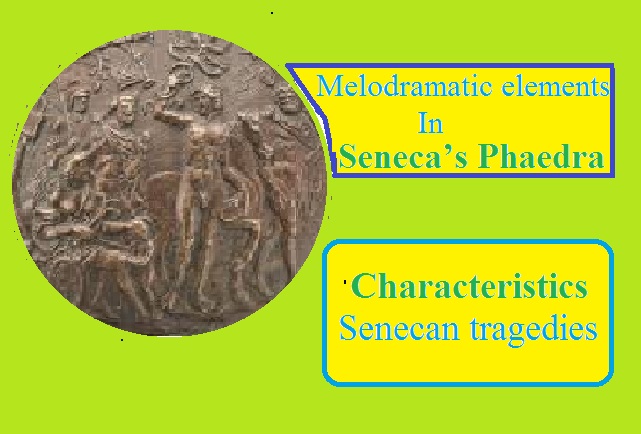Seneca is renowned Roman tragedian. In writing tragedies Seneca followed Greek play writers. He borrowed the plots of his plays from the play of Aeschylus, Sophocles and Euripides. Most of Seneca’s tragedies are based on Greek legends and myths.
The employment of sensational themes drawn from Greek mythology, involving such unnatural crimes as rape, adultery, incest, infanticide, suicide etc and often motivated by revenge which is the most prominent feature of a Senecan tragedy. The other traits of such a tragic play are as follows:
i) emphasis on violence, horror and gruesome senses.
ii) violence staged before the audience
iii) employment of the supernatural ghost demons etc.
Because of the above characteristics Senecan tragedies are regarded as melodramatic. As many of the theme deals with the theme of revenge they are called revenge tragedies. Let’s see now whether ‘Phaedra’ a celebrated play of Seneca, is a revenge tragedy or not.
Table Of Contents
Revenge In Phaedra
In Seneca’s Phaedra, the central theme is revenge that by Theseus against his son Hippolytus for his alleged rape against his step-mother and that by Phaedra against her husband. Theseus for his abandonment of her soon after her marriage and his unexpected appearance from the underworld which thwarts her love for her step son. The play contains some other features of revenge tragedy which we point out now.
In revenge tragedy one many find the pilling up of crude physical horror upon horror which assume melodramatic quality. The death scene of Hippolytus which is one of the central events of the play ‘Phaedra’ is full of horror while describing the tragic death of Hippolytus, the messenger says:
“My fear still trembles on my leaps”
Then he tells Theseus that while Hippolytus was driving his chariot along the sea shore unexpectedly a thunder rose from the sea to meet the stars. The sea began to be lashed by a storm. Then a horribly shaped bull on the shore is appeared. Its hinder parts were drawn into an enormous length covered with scales. After a pause the bull charged ahead. Seeing it the horse of Hippolytus became afraid and restless. They went of road with the chariot behind them and ran to and fro. As a result Hipplytus was died horrifiedly but it helps insert sensationalism in the play.
The suicide of Phaedra
The suicide of Phaedra is another event of horror and sentimentalism in the play. It seems that through out the play, Seneca has put continuous emphasis on incidents of horror and gory details.
Murder is generally at the centre of revenge tragedy. This is however no the case with “Phaedra”. The death of Hippolytus towards the end of the play, can be termed as a murder and its instigator was Theseus. In addition to this, Phaedra who lost all desires of living, killed herself. Thus we find one of the melodramatic elements in ‘Phaedra’.
Sensationalism in Melodrama
Sensationalism is another characteristic of melodramas. In Phaedra there is sensationalism in the description of Hyppolytus hunting scene. Sensationalism is also found in description of the bull shaped monster. Again Phaedra’s suicide on the stage before audience is another sensational event in the play.
In a melodrama, the appearance of ghosts or other supernatural agencies is a common phenomenon. Though no ghosts appear in ‘Phaedra’, the monster sent by Neptune plays an important role in bringing the catastrophe of the play.
Watch the video about Phaedra Movie in the following for your better understanding.
Read More Literary Writing in the following:
Dover Beach Poem Analysis | Critical appreciation or theme on the poem “Dover Beach
To His Coy Mistress Analysis And Summary By Andrew Marvell
Use of Myth In Auden’s Poetry | Mythology in Modern British Poetry by Auden
Theme of melancholy in Emily Dickenson poems analysis
John Donne poems reflects love – John Donne as a metaphysical poet research paper
Ode to a skylark critical appreciation or analysis theme summary
Character of Belinda in The Rape of The Lock By Alexander Pope



